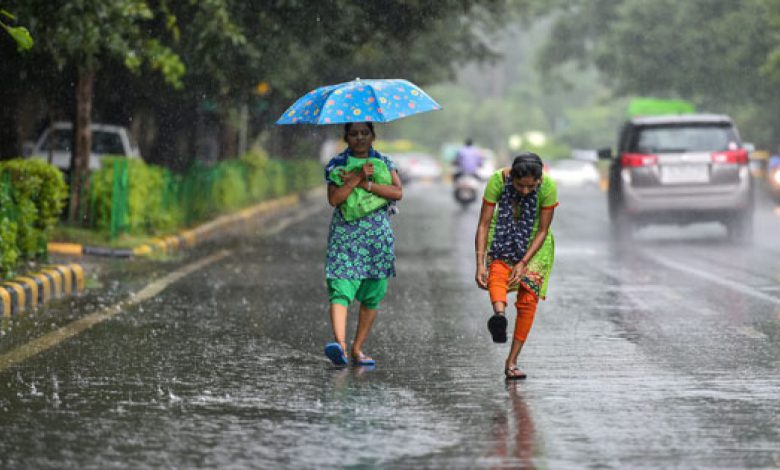
MUMBAI — As monsoon fury grips Maharashtra, the India Meteorological Department (IMD) has sounded a red alert for Mumbai and surrounding areas, forecasting extremely heavy downpours that could unleash chaos across the region. The warning, effective Sunday, September 28, targets key districts including Thane, Palghar, Raigad, and Ratnagiri, where relentless and intense rain spells are anticipated. Further afield, Sindhudurg and the hilly ghat sections of Nashik face similar threats of severe precipitation.
While the Konkan coastal strip and parts of northern Maharashtra bear the brunt of this extreme weather pattern, drier conditions prevail elsewhere. Central Maharashtra, Marathwada, and Vidarbha regions are set for only scattered, light showers, according to IMD projections, offering a brief respite amid the state’s broader deluge risks.
Responding swiftly to the IMD’s dire outlook, the State Emergency Operation Centre (SEOC) has mobilized district authorities statewide, urging heightened vigilance through Tuesday, September 30. Officials caution of multiple hazards: widespread urban inundation in Mumbai’s vulnerable lowlands and Konkan locales, potential landslides along steep ghat slopes, and sudden flash floods that could swell rivers overnight.
To counter these perils, emergency protocols are in full swing. Control rooms across districts now operate nonstop, with water-pumping units strategically placed to combat rising waters. Teams are tracking river levels and dam outflows meticulously, while repair crews equipped with essentials like chainsaws and backup generators stand ready for rapid deployment. The Fadnavis-led government emphasizes proactive measures to safeguard lives and infrastructure, underscoring the need for residents to stay indoors and heed evacuation advisories.
This escalation follows a string of recent disruptions from earlier rains, including snarled traffic, submerged streets, and localized power outages in the metropolis. As the storm builds, authorities urge commuters to avoid unnecessary travel, with alternate routes flagged for potential blockages. For the latest developments, India TV continues to monitor the situation, drawing on real-time inputs from its network of correspondents. Updates on breaking news can be followed at India TV’s India section, while Maharashtra-specific coverage remains accessible via the dedicated portal.
The IMD’s alert arrives at a critical juncture, with the southwest monsoon officially withdrawing but leaving behind a volatile legacy of atmospheric instability. Experts attribute the intensified rainfall to a lingering low-pressure system over the Arabian Sea, funneling moisture-laden winds toward the western ghats. In Mumbai alone, preliminary models suggest accumulations exceeding 200 millimeters in isolated pockets, rivaling records from last year’s infamous deluges.
As the day unfolds, the focus sharpens on resilience: schools and colleges in affected zones may shutter preemptively, and fishing communities along the Konkan coast have been advised to secure vessels. The SEOC’s directives also extend to agricultural belts, where standing crops risk devastation from waterlogging. Transportation hubs, from Chhatrapati Shivaji Maharaj International Airport to coastal rail lines, are on standby for diversions.
This unfolding crisis tests the Fadnavis administration’s disaster management framework, honed by years of recurrent flooding episodes. Yet, with preparedness at the forefront, the state aims to mitigate impacts. Residents are encouraged to download IMD’s weather app for hyper-local forecasts and report hazards via toll-free lines. As thunder rumbles on the horizon, Maharashtra stands at the precipice of nature’s raw power—a stark reminder of the monsoon’s dual edge: life-giving rains, and the peril they portend.




